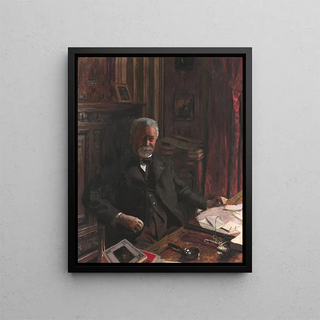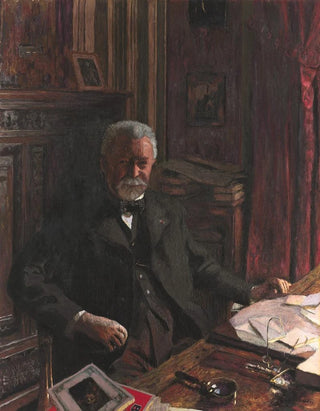Art print | André Bénac - Édouard Vuillard


View from behind

Frame (optional)
André Bénac - Édouard Vuillard art print - Captivating introduction
The André Bénac - Édouard Vuillard art print is part of a fascinating dialogue between art and perception. This piece, imbued with a unique sensitivity, opens a window into the intimacy of everyday life, capturing fleeting moments with unparalleled delicacy. Vuillard, an iconic figure of the Nabi movement, manages to transcend the simple painting to offer an immersive experience, where each brushstroke tells a story. In this work, the viewer is invited to enter a universe where light and color blend to create an atmosphere that is both warm and melancholic, inviting contemplation.
Style and uniqueness of the work
Vuillard's style is distinguished by its bold use of motifs and textures. In this art print, one can admire his talent for integrating decorative elements into the composition, transforming the painting into a true fresco of modern life. The colors, often soft and pastel, are juxtaposed with remarkable mastery, creating visual harmonies that soothe the eye. The technique of loose brushwork, characteristic of the artist, gives the work a fluidity that seems almost tangible. Every character, every object, is rendered with meticulous attention, reflecting Vuillard's affection for his subject. The uniqueness of this piece also lies in its ability to evoke deep emotions, to make one feel the warmth of a home or the melancholy of a fleeting moment.
The artist and his influence
Édouard Vuillard, born in 1868, is one of the most influential members of the Nabi movement, which advocated a symbolist approach to art. His career began in a vibrant artistic context, where he moved away from academic conventions to explore new paths. Vuillard drew inspiration from daily life, bourgeois interiors, and family scenes, while incorporating elements of French pictorial tradition. His influence is felt not only in the work of his contemporaries but also in those of subsequent generations, who see in him a precursor of modernism. His ability to fuse the intimate and the collective, to explore the human psyche through domestic scenes, has opened

Matte finish

View from behind

Frame (optional)
André Bénac - Édouard Vuillard art print - Captivating introduction
The André Bénac - Édouard Vuillard art print is part of a fascinating dialogue between art and perception. This piece, imbued with a unique sensitivity, opens a window into the intimacy of everyday life, capturing fleeting moments with unparalleled delicacy. Vuillard, an iconic figure of the Nabi movement, manages to transcend the simple painting to offer an immersive experience, where each brushstroke tells a story. In this work, the viewer is invited to enter a universe where light and color blend to create an atmosphere that is both warm and melancholic, inviting contemplation.
Style and uniqueness of the work
Vuillard's style is distinguished by its bold use of motifs and textures. In this art print, one can admire his talent for integrating decorative elements into the composition, transforming the painting into a true fresco of modern life. The colors, often soft and pastel, are juxtaposed with remarkable mastery, creating visual harmonies that soothe the eye. The technique of loose brushwork, characteristic of the artist, gives the work a fluidity that seems almost tangible. Every character, every object, is rendered with meticulous attention, reflecting Vuillard's affection for his subject. The uniqueness of this piece also lies in its ability to evoke deep emotions, to make one feel the warmth of a home or the melancholy of a fleeting moment.
The artist and his influence
Édouard Vuillard, born in 1868, is one of the most influential members of the Nabi movement, which advocated a symbolist approach to art. His career began in a vibrant artistic context, where he moved away from academic conventions to explore new paths. Vuillard drew inspiration from daily life, bourgeois interiors, and family scenes, while incorporating elements of French pictorial tradition. His influence is felt not only in the work of his contemporaries but also in those of subsequent generations, who see in him a precursor of modernism. His ability to fuse the intimate and the collective, to explore the human psyche through domestic scenes, has opened






